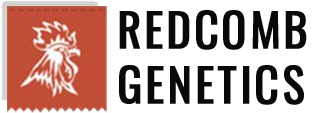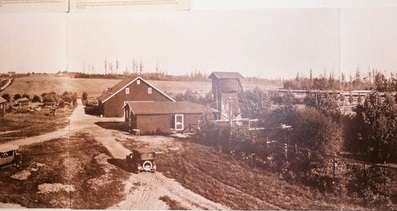Mr Mort. E. Atkinson purchased land at Hollywood Farm on Sept 1st 1913 with 800 good quality, American-bred S.C. White Leghorns and 300 Orpingtons. The farm was called Hollywood Hill because of the Holly trees planted by Mr C.D. Stimson. Mr Stimson was a wealthy Seattle lumberman and established Hollywood Farm as a dairy farm. Mrs Stimson had several large greenhouses and sold flowers all over the world. Today it is the site of Chateau Ste. Michelle Winery the oldest winery in Washington State. The Stimson’s built a French-style chateau on 87 acres (35 ha) of land with mature trees and used it as a hunting retreat and rural working farm called the Hollywood Farm. In 1953, 40 years later, following the death of Mr Atkinson, Arthur Heisdorf purchased the Hollywood Hill Farm to expand his breeding operation, Heisdorf and Nelson. Mr Heisdorf retired in 1977 on a portion of Hollywood Hill Farm.
In partnership with Mr F.S. Stimson, Mort Atkinson set out to establish his “Foundation” stock from the very best white Leghorns he could find in the world that met his criteria of large deep bodies and producing large white eggs. He favoured birds reaching 3 ½ lbs at six months reaching 4lbs at one year and 4 ½ lbs at two years. Unable to find any on the Pacific Coast he contacted the Poultry Commissioner in British Columbia, Mr J. R. Terry. He said the Leghorns meeting his requirement were to be found in South Australia on the farm owned by Mr A. Herbert Padman. Mr Padman was the originator of the most famous family of S.C. White Leghorns in the world. In the Southern Hemisphere he was known as the “Leghorn King”. An Australian Government poultry expert Mr D.S. Thompson who had been in charge of 18 egg laying competitions selected two males and a “pen” for Mr Atkinson that had 50% Padman Leghorn blood. Although the Padman strain was a small body type the birds sent by Mr Thompson in 1916 were both medium and large. Mr Padman writing to Mr Atkinson said he had young stock coming on from dams with records of 270 to 306 eggs.
Mr Terry also suggested that Mr Atkinson purchase a pen of Leghorns which were sure to easily win the 1913-1914 International Egg Laying contest at Victoria, British Columbia. This was a pen entered by Mr S. Hopkins of the Rangiuru Egg Ranch in Otaki, New Zealand. Mr Hopkins was reputed to have the biggest poultry breeding farm in the Southern Hemisphere. The pen and spares were duly purchased for $US 400. Following correspondence between Mr Hopkins and Mr Atkinson a special cockerel was also purchased for two pounds 10 shillings and sent by boat to San Francisco. The pen had won the contest by laying an average of 221 eggs in 11 months. Taking the breed origins further back a Mr Vic Kappler, an Australian breeder of twenty years experience wrote to Mr Atkinson and co-author Grant Curtis of the book “The Production of 300-eggers and better by line breeding” stating that the wonderful laying strain in Australia and New Zealand had blood from the Wyckoff strain of White Leghorns. When seeking to outcross the Southern Hemisphere Leghorns the breeders invariably sought the Wyckoff strain.
Lewis Wright in his book “The Practical Poultry Keeper”, 1904, stated that Charles H Wyckoff established a farm in Groton New York in 1888 and by 1898 he was producing 1500 to 2000 a year and selecting 600 to overwinter. In 1898 the 600 averaged 194 eggs per bird.
By 1921 the farm had 12,000 egg producing hens, the emphasis later changed to breeding hens and the majority of income came from the sale of chicks and hatching eggs. Mr Atkinson died in 1941 and his business was finished soon afterwards.


